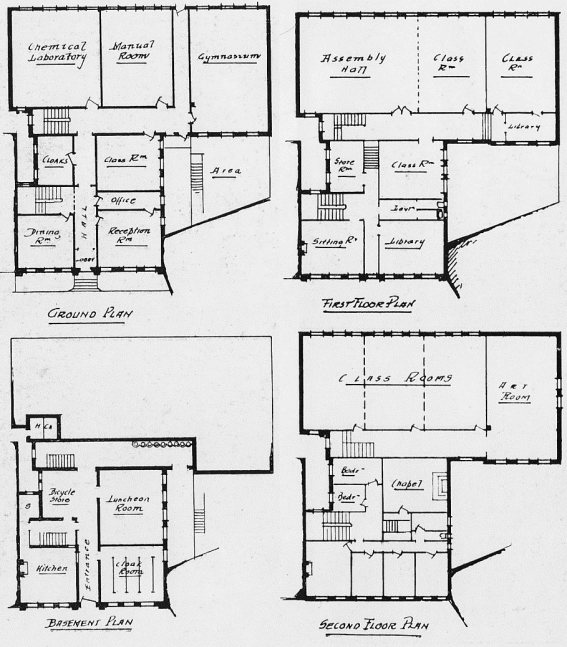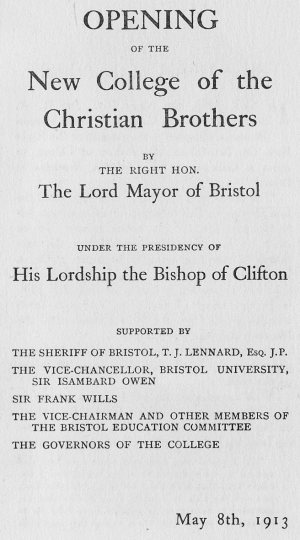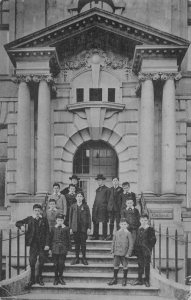1890
The Rt. Rev. Clifford, Bishop of Clifton, planned with others, to found a school for boys' in Bristol.
1891
Canon O'Brien introduced the Christian Brothers' to Bishop Clifford.
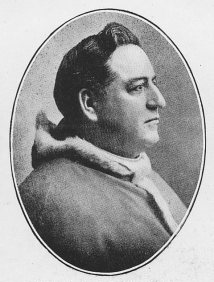 |
Very Rev. David Canon O'Brien |
1892
Negotiations began in earnest.
1893
The Christian Brothers' Superior General (Very Rev. Bro. R. A. Maxwell) agreed in principle.
1894
Bishop Clifford died and procedures stalled. His successor was Rt. Rev. W. R Brownlow.
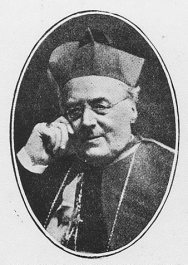 |
Right Rev. W. R. Brownlow
Late Bishop of Clifton |
1895
Bro. Maxwell appointed Bro. J. T. Hayes, first president of the new school, which included selection of a suitable site at his discretion.
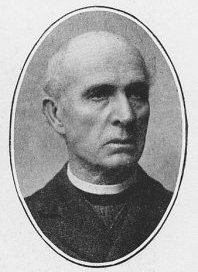 |
Rev. Br. J. T. Hayes |
1896
On June 2nd, Bro. Hayes made the all important purchase of a Georgian house, no.9 Berkeley Square, for the sum of £900.
Alterations costing around £150 were made to the property and on 8th September the new school was opened by Bishop Brownlow. It was known as The Christian Brothers' College, Bristol.
The building could accommodate 80 boys. Within the first month there were 60 boys on the roll.
The site adjoined the spacious recreation grounds of Brandon Hill.
At the opening ceremony (reported as unostentatious, yet befitting), Bishop Brownlow said;
"At my invitation you have come over here and opened an establishment today in Bristol and I sincerely trust that, with the blessing of Almighty God, you will be able to educate those youths that are entrusted to your care - to educate them fully up to the mark in secular instruction, so that they may walk shoulder to shoulder and be in the march of human progress in Bristol, and may be qualified to be good citizens of this great city"
Bro. Hayes became the first headmaster.
The original prospectus gave the fees as:-
Preparatory Course £1. 10s. 0d to £2 per term.
Commercial Course £2. 10s. 0d to £3 per term.
University Course £4. 0s. 0d per term.
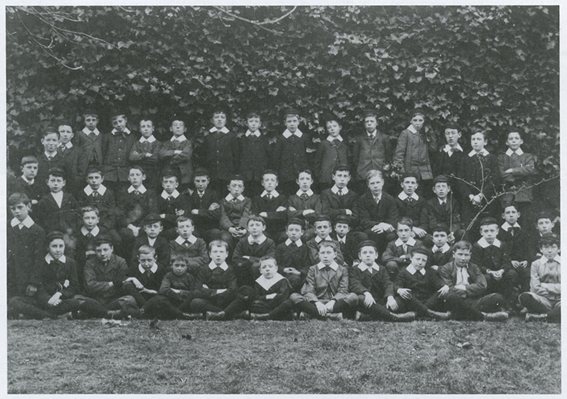 |
This is believed to be the first school photograph. With 55 pupils in the
picture, it ties in to the roll figure and therefore deemed circa 1896. |
1897
The Technical Education Committee recognised the school for the holding of Junior City Scholarships.
1902
The Education Bill made it possible for Local Authorities and the then Board of Education to give financial aid to secondary schools.
The school received a generous grant for the provision of laboratory and scientific apparatus.
1904
Application was made to the Board of Education for recognition as a secondary school.
Two Inspectors travelled from London for the purpose of considering the application. Their report stated :-
"The application could not be considered, as the accommodation was too limited for the numbers attending, and for the requirements of the Board of Education for Secondary Schools".
A meeting was subsequently called in June, at which his Lordship the Bishop of Clifton presided and where it was decided to form a Committee with power to undertake the responsibility of providing the necessary extension.
1911
The school roll had risen to 110.
1912
The Committee decided to purchase the house next door to the existing school (no.10 Berkeley Square).
Plans were drawn up (by Mr. John Bevan L.R.I.B.A.) to meet the Board of Education requirements and included (at considerable expense) Physics and Chemistry Laboratories, Lecture Room, Art Room and Room for Manual Instruction.
The plans were approved by the Board of Education and building work began on 26th August.
1913
Lessons continued in the Pro-Cathedral Hall and the adjoining rooms, while the building work was in progress.
Boarders were housed in another converted house nearby, which is now incorporated into the premises of St.Mary's Hospital.
The opening of the new College of the Christian Brothers was performed by the Lord Mayor of Bristol on May 8th.
A fine Playing Field was procured at Henleaze, where cricket pitches were laid and a Pavilion erected.
1914
Brother J.S.Roche became the second person to accept the post of headmaster.
Pupils outside Berkeley Square entrance. The 'Christian Brothers College' sign can be clearly seen. Two of the pupils are identified as J.A.Roe (2nd row, 1st on the left) and W.E.Roe (front row, 3rd from the left)
1918
The first edition of St.Brendan's College Magazine was published. This is believed to coincide with the change of name for the school, from The Christian Brothers' College, Bristol, to St.BRENDAN's COLLEGE.
Educational legislation raised the school leaving age to 14.
The school acquired a sports field in Westbury.
1919
A marble tablet was placed in the Assembly Hall, commemorating those who lost their lives in the Great War.
1922
A sports pavilion was erected at Westbury in memory of the Old Boys who had lost their lives in the Great War.
1924
Brother Roche moved to Prior Park College in Bath (which the Brothers had re-opened).
Brother J F Brannigan was appointed headmaster.
All boarders were transferred from St.Brendan's to Prior Park.
1927
The tenth number of St.Brendan's College Magazine, completed Volume 1 and included a most appropriate missive on the subject of school day reminiscing :-
Quote: "Think what it will be like in forty years' time to sit in an arm-chair before a blazing fire and have St.Brendan's Magazine in your hand. Such a thought will make you treasure your copies of the Magazine, and will urge you to get them bound as each volume is completed".
1929
Brother J.B. Thompson appointed headmaster.
1934
Brother D. B. McDonald was appointed as headmaster - fondly known as 'Jumbo'.
1939 - 1944
World War II
Soldiers manned a Lewis gun on the school roof.
The school was bombed and damage to the buildings necessitated extensive work. A partial contribution of £755 17s 9d was received from the War Damage Commission.
Lay teachers were called-up for war duty and the staff therefore largely consisted of Christian Brothers'. Popular lay teacher Tom Molloy was too old to serve in the forces.
English teacher (and Bristol 1st XV full-back) Frank Duggan was amongst the lay teachers called-up.
The Christian Brothers were unable to take a respite at home in Ireland as travel between England and Ireland was forbidden during the war years.
Pupil numbers fell as many became 'evacuees'. Meanwhile, those who continued to be educated through the war years recall lessons being interrupted by air raid warning sirens. Pupils were ordered to make an orderly line down to the huge cellars beneath the school building.
Headmaster: Brother M.D.Gibbons.
1944
A large group from the school's 520 pupils and 15 staff, attended a High Mass at Bristol Pro-Cathedral to celebrate the centenary of the death of Brother Edmund Ignatius Rice [founder of the Irish Christian Brothers].
1945
The school slowly returned to normality and tentative enquiries were made to acquire new and larger buildings.
Educational legislation moved the school leaving age to 15.
Following the Education Act 1944, St. Brendan's became a direct grant grammar school. This provision of free education enabled many more boys from Bristol and surrounding areas to join the school.
1950
Significantly, the Christian Brothers acquired 50 acres of land plus two houses, including The Beeches, in Brislington, Bristol.
Much of the land had been acquired from Brislington House, a former private lunatic asylum for the wealthy [founded by Dr. Edward Long Fox (1762-1835) - who had created a number of ornamental walkways through the grounds as part of a pioneering technique in the early nineteenth century believing that healthy outdoor walking would heal damaged minds].
The school sports field in Westbury was vacated and sold. Brislington provided superb new sports grounds.
The annual school expenditure was £20,000.
Headmaster: Brother Tom Lennon.
1951
It is believed that this is the year the CCF began.
1952
Parents and Friends Association launched and began a long series of fetes, whist drives, bazaars, dances, car rallies etc.
1954
Brother J.V.Crease was appointed headmaster.
1956
Brother Hooper was appointed headmaster. His previous position (1949 - 1956) was that of headmaster of St. Edward's College, Liverpool. In those post war years he was accredited as overseeing a period of high achievement at St. Edward's. He was the driving force behind the building of the new college on the Brislington site. He had a great devotion to St Joseph the Worker, and made his debut at St Brendan's by announcing that he had buried a medal of that saint on the site of the new school. This, he assured everyone, would secure the necessary grants for its construction. His faith was never shaken.
Plans for the new school building were approved by the Ministry of Education.
Credit squeeze restrictions delayed progress.
1958
The first part of the new building contract was awarded (Benson Brothers,Bristol Ltd)
The access road was built and ancillary services commenced.
1959
As the school prepared to move location, Bristol University agreed to purchase the existing site for the sum of £26,613.
The contract for the erection of the new buildings at Brislington was awarded to John Laing & Son ltd.
On October 15th, His Lordship the Bishop of Clifton, Rt Rev Dr.Joseph Rudderham, blessed and laid the foundation stone.
1960
In the final weeks of the summer term, Brother Hooper closed Berkeley Square and everyone excitedly looked forward to the move to Brislington, although for many it was sad to see the old building, with all its history and memories, finally close.
On 14th September, the (majority of the) new building opened amongst general excitement and an exchange of views on the spaciousness and elegance.
The joyous opening was tempered with the sadness that the late Brother Lennon, who had been instrumental in the founding of the new building, was not present.
A school bell commemorated the interest of the Old Boys Association. Striking the hour from 8am to 6pm.
1961
The changing room unit and workshop block was completed.
On June 16th The Stations of the Cross were erected by Rev.Fr.Reidy.
1963
Brother J. Brennan was appointed headmaster.
1964
The Electronics Society was formed, with the help of Mr.Callaghan.
1965
The School roll totalled 771 pupils.
Leslie Bellew appointed Head Boy.
Annual sports day was changed from the end of the summer term to the end of the spring term.
Pupil Derek Indoe, with the help of Br.O'Boyle started a new school magazine "Viewpoint" (religious topics).
1966
The School Play was revived. Since the move from Berkeley Square (renowned for excellent annual plays) it had not been possible to produce until, lighting and stage facilities were completed. The first production was 'Emil And The Detectives'. There was a large cast, with Christopher Hadrill in the lead role. Others in the cast were; Paul Lavers, Christopher Baker, Derek Indoe, Kieran Oatley and Matthew Clements. The play was produced by elocution/drama teacher Hedley Goodall.
Sixth Form Jazz Society was formed.
Boat Club formed.
Popular master John Blake decided to leave his post at the school, following a long association as both a pupil at Berkeley Square and as a teacher.
Brother Casey died.
New members of staff were Brother Francis, Mr.P.Kavanagh, Brother Roberts, Mr.W.Ryan and Brother Gillen.
In September, an extra class was introduced to the fifth year, known as 5D. The form master was Mr. R. James. The reason for this was to accommodate repeat 5th year pupils and to reduce the class numbers of 5A, 5B and 5C.
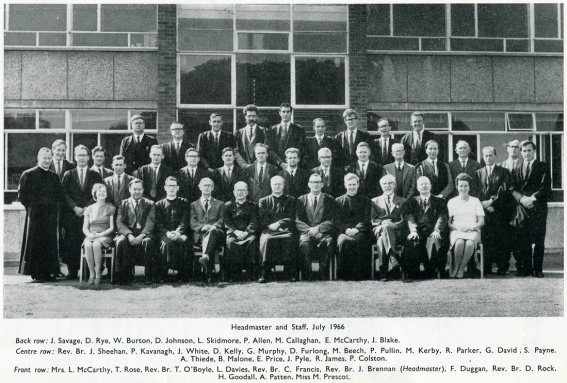 |
Headmaster and Staff |
1971
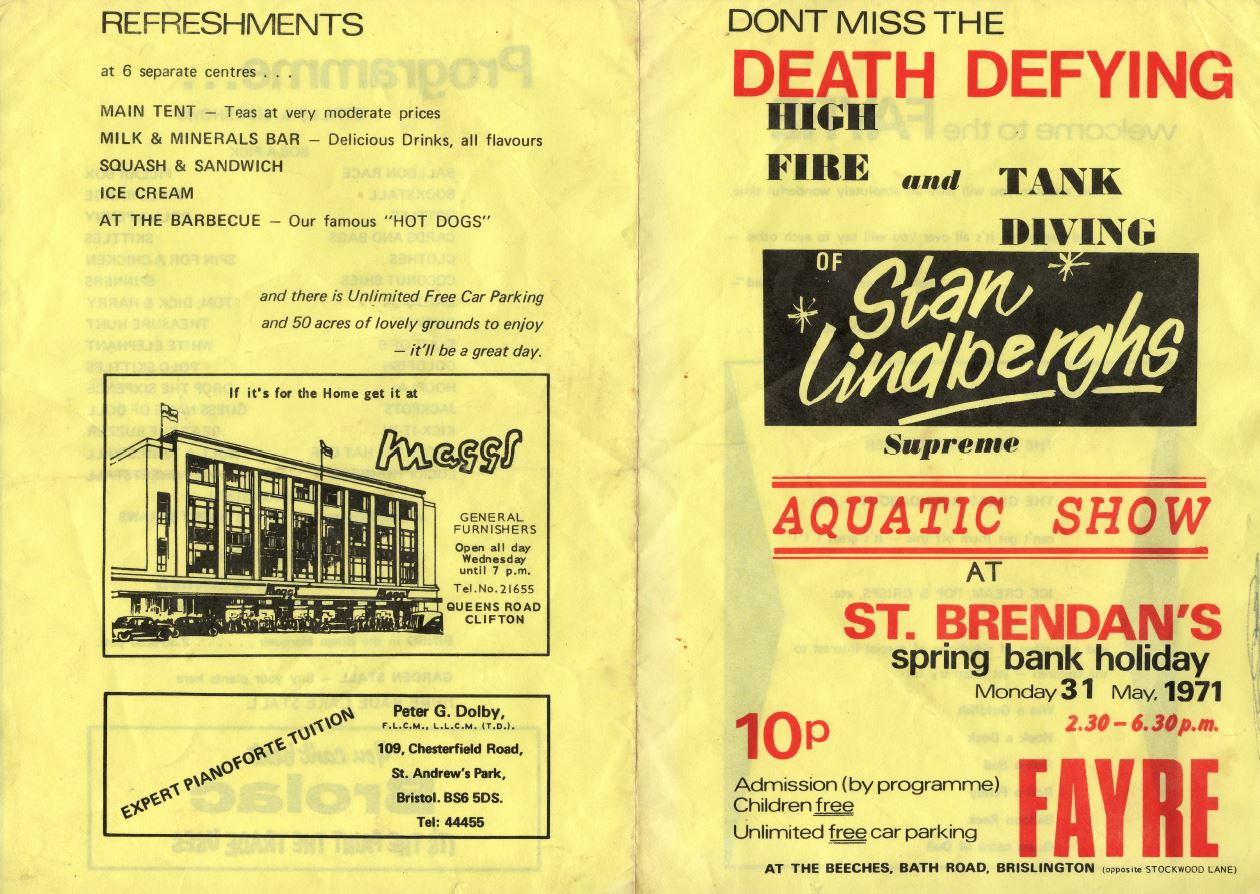 |
St. Brendan's Fayre flyer. 31 May 1971. |
1976
Prep school intake ceased.
1979
The school changed its status to a Sixth Form College. The association with the Christian Brothers ended.
1980
The first computers were purchased for student use.
1983
Annual art exhibition began.
1984
The formal opening of the new Creative Arts Block marked a new beginning, providing an opportunity to develop a curriculum and ethos more akin to a Sixth Form College rather than a Direct Grant Boys' School.
1988
Annual visits to Italy began.
1990
Open access computer room introduced and computers first introduced to the office administration.
1995
The Secretary of State for Education, Gillian Shepherd MP, visited the college. This was the first such visit in the College's history. She officially opened a new CD-Rom network and video editing suite.
A new library opened.
2002
An OFSTED report praised St. Brendan's for computing and information technology, visual and performing arts, psychology, sociology, government & politics, history, geography, English.
2006
A feasibility study identified a major replacement programme as the most cost effective solution to developing the College buildings.
2008
The College was within the top 10% of sixth forms in the county.
Sadly, student Joe Dymond-Williams became a murder victim (whilst on a night out in Bristol City Centre).
2009
Demolition of the school building began, following 49 years of service. Whilst a sad loss for the thousands of pupils who attended, it would be fair to say that the building had become tired, outdated and the classroom layout hugely inappropriate.
Former pupils were given the opportunity to visit the old school for the last time (12th July). Nostalgia reigned for three final happy hours for the lucky 100 or so former pupils. Former teachers in attendance included, Mr.Colston, Mr.Kirby and Mr.Burton.
A bright new future heralded with a brand new building for the 21st century. A challenge enthusiastically undertaken by the staff. The topping out ceremony of the new building was performed by Father Gerry on a grey and misty day in January.
Plans afoot to restore the school bell.
An annual trophy was set up in memory of Joe Dymond-Williams. Awarded by the Student Union to reflect Joe's qualities (kind, generous and helpful). The first recipient was Daniel Shearing.
'A' Level students achieved a 98% pass rate.
Principal Derek Bodey retired at the end of the year.
2010
A new decade and a new era for the College. Ann Barrow took over the helm, becoming the first female principal. She had moved to St. Brendan's from Strode College in Street, where she taught chemistry. She held the post of Vice Principal at St. Brendan's for almost ten years before accepting the top position.
People and Planet's Week in September was a success, raising awareness of a variety of issues.
The College winter production was Mnemonic.
2011
Student Megan Oaten selected to play rugby for England Under 20's.
2012
Teachers went on strike for a day to protest against the huge financial cuts imposed on the College, as a result of Government austerity measures.
Brother Sheehan died in April, after a short illness. His funeral was attended by several old boys, who made the long trek to Cheshire from the West Country. Brother Rock attended the service.
2014
On Friday 21st November history students took part in a First World War centenary commemoration day. Over a hundred AS and A2 students went to special sessions run by Kevin Hicks of the History Squad.
Kevin brought History and the Western Front into the classroom and teachers and students were totally engaged and moved. Meanwhile 20 other history students turned detective and tried to trace the identities behind the 23 initials and surnames on the College's War Memorial for St Brendan's Boys who died in the First World War. This memorial has now been proudly displayed in all three of the College buildings, from Berkeley Square to Brislington (1) and now Brislington (2). In just a few short hours the students, assisted by their teachers and local military historian Jeremy Banning and English Heritage researcher Michael Gorely managed to trace over half of the boys' full names and their tragic fates.
At the end of the day the student's exhibition of their findings was opened officially by the College's Vice Principal and by a former old boy Denis Wright who lit a candle of remembrance while John Lux the College Chaplain said some brief prayers and students read accounts of the boys who had been traced.
2022
Brother Rock died on the 27th April. He began his teaching career in 1957 at St. Brendan's, Berkeley Square, and his mild manner made him a popular teacher. He was credited for designing a physics laboratory power pack that was widely used in schools.
|





